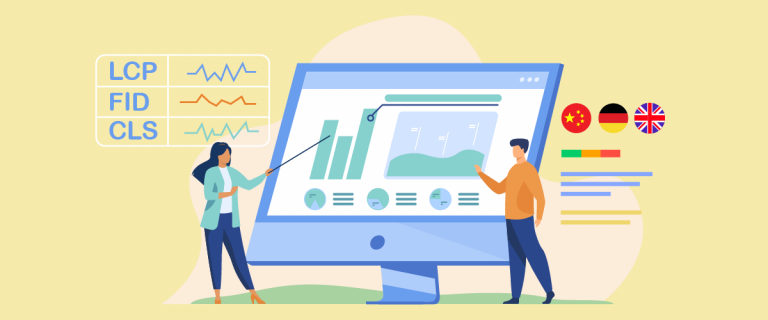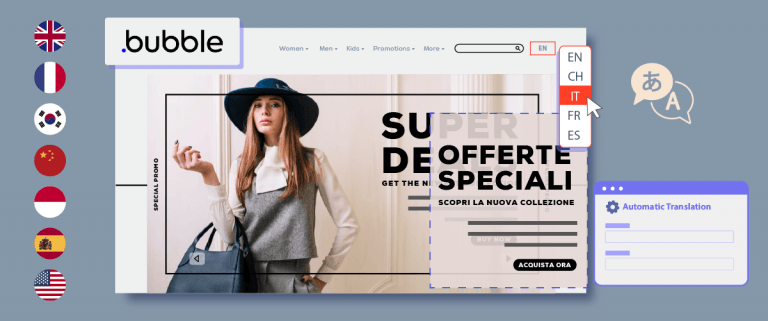Creating digital products accessible and understandable to a global audience is becoming increasingly important. With the internet, geographical boundaries are becoming increasingly irrelevant, enabling businesses to reach broader international markets.
However, digital products must be authentically localized and customized according to language preferences, cultures, and local norms to thrive in the global market.
Localizing digital products into various languages can be easily achieved if done correctly. With the right tips and best practices, you can make your digital product multilingual, thus enhancing product sales conversions and business growth.
Why should you translate digital products to other languages?
Translating digital products into various languages means creating a multilingual digital product. Before knowing how to create a multilingual digital product, it is important to understand why you need to translate your digital products into various languages. Here are some reasons.
- Reaching a wider audience and accessing new markets: By translating your product, you automatically open it up to new customer bases who previously could not understand or use it. This can unlock significant growth for your business, especially in regions with large populations or high internet penetration.
- Improving engagement and user experience: When users can interact with your product in their native language, they are more likely to understand it, navigate easily, and feel engaged fully. This leads to increased satisfaction and overall positive user experience, which can result in brand loyalty and better advocacy.
- Boosting sales and conversions: An article in the Harvard Business Review shows that 72.4% of consumers said they would be more likely to buy a product with information in their language. Offering multilingual options in digital product sales can eliminate significant barriers to conversion, ultimately leading to more sales and revenue.
- Enhancing your brand image and building global recognition: Translating your product demonstrates your commitment to an international audience and expands your brand’s reach beyond your domestic market. This can enhance your brand’s perceived global expertise and professionalism, attracting new customers and partners.
- Improving search engine optimization (SEO): By offering your product in multiple languages, you can increase blog traffic to boost your ranking in search results for diverse audiences. This can drive more organic traffic to your product and attract potential customers organically.
- Compliance with legal requirements and regulations: In some countries, there are legal requirements to offer products and services in the local language. Translating your product can ensure you comply with these regulations and avoid potential legal issues.
Tips for creating multilingual digital products
Now, you understand the importance of translating digital products into various languages. Below are several tips for creating multilingual digital products.
Research your target audience and languages
Before creating multilingual digital products. It is important to conduct in-depth research on the target audience and the languages they use. This research will help you prioritize which languages to prioritize in the creation process and ensure your digital product is relevant to the local audience’s needs.
When researching the audience, there are several things to consider. Among them are.
- Identify your target audience’s demographic characteristics, such as age, gender, education, income, and occupation. Understanding these demographics will help you devise appropriate strategies to reach them.
- Learn which languages your target audience uses. In addition to the official language, consider dialects, slang, and regional variations that may differ in everyday communication.
Speaking of language selection, you must also know some important language considerations. Some of the hardest languages to translate require extra attention if they are to be translated. Here are some factors.
- The number of speakers of a particular language in the target market.
- Languages that have comprehensive global coverage.
- The difficulty level of the language.
- The language used by the target users, etc.
Avoid long sentences
In translating content, avoid using long and complex sentences. Lengthy sentences can make it difficult for translators to maintain the original meaning and intended nuances. Instead, use short and simple sentences that are easier to translate accurately. This will also help improve readability and user understanding of the translated content.
The appropriate length for a sentence usually ranges from 15 to 25 words. Sentences that are too short may be overly brief and lack information, while sentences that are too long can confuse readers and be hard to understand. By keeping sentences within this range, you can maintain the readability and comprehensibility of your text.
Use simple vocabulary
Use simple and commonly used vocabulary in the target language. Simple vocabulary will be easier to understand by different audiences and reduce the risk of misunderstanding or misinterpretation. Additionally, ensure to use consistent terminology throughout your digital products. For example.
- Instead of using the word “initiate,” it’s better to use “start.”
- Instead of using the word “assist,” it’s better to use “help.”
- Instead of using the word “rapid,” it’s better to use “fast.” And various other vocabulary words.
Consistent across all pages digital product
Ensure consistency in writing style and format across all pages and sections of your digital product. This consistency will help create a seamless user experience and avoid confusion or misunderstanding in understanding your digital product.
Some vocabulary often results in odd translations. In addition, brand names are better left as they are. Such vocabulary can be excluded using the translation exclusion feature.
Some translation services already support this feature, where users can exclude text from translation, exclude pages, or exclude URLs.
Provide customer support in multiple languages
As a digital product owner, imagine if a user wants to buy your product and asks about it. However, the seller
explain in their own language, not in the buyer’s language, this of course causes buyers to be confused. This is what happens with most businesses, they cannot facilitate users by providing multiple languages. Therefore, in making multilingual digital products, it is important to support customer support that is available in various languages.
This has been done by various large businesses, one of which is Airbnb. In addition to translating automatic text translations, they also created a support team that can speak more than one language. This ensures that its users can connect with executives who speak their language & help them resolve their queries.
Provide language-switching options
Provide an option to switch between available languages easily. This button facilitates users’ quick and efficient access to digital product content in their preferred language. The language switch button should be prominently visible and easily accessible throughout the interface of your digital product. Also, save users’ language preferences so they do not need to reset them whenever they access your product.
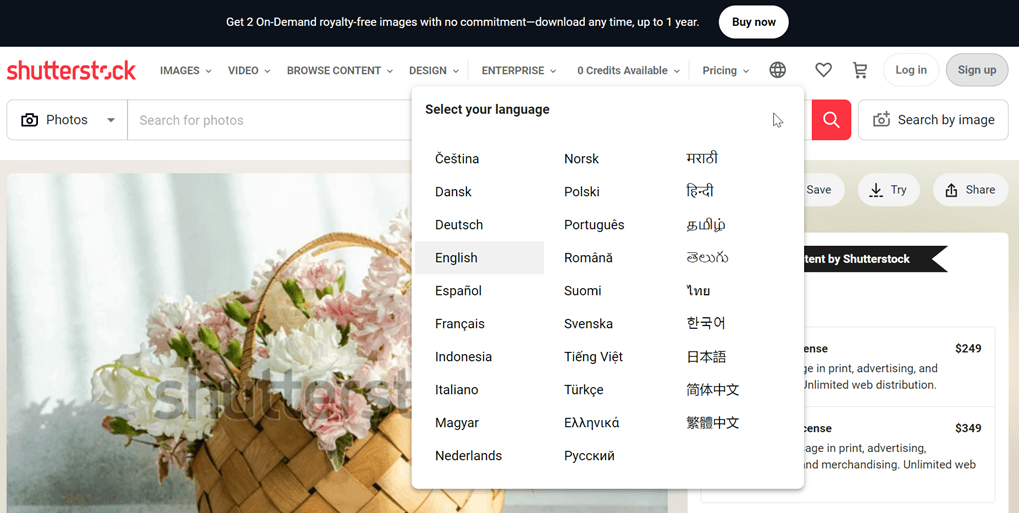
Collaborate machine translation and translators
Utilize machine translation technology to translate content efficiently, but make sure to review and edit the results with the assistance of professional human translators.
Machine translation can speed up the process and reduce costs, but human translators must ensure accuracy, nuances, and high-quality translation. Collaboration between machine and human translators will optimize the localization process and produce digital product content that is genuinely local and natural.
Therefore, it is important to seek translation services that offer editor support features and allow for inviting translators.
Those are some tips for creating multilingual digital products. However, translating digital products into other languages alone is not enough. Beyond that, you need to localize multilingual digital products to better fit with local cultures.
Why do you need to localize digital products into other languages instead of just translating?
Localization is the process of adapting products, services, or content to fit the culture and preferences of the local market. It’s not just about translating text from one language to another but also about understanding cultural nuances and adjusting content to be relevant and appealing to users in specific regions. Here are some reasons why you need localization.
- Translation alone often fails to capture the complete context, cultural nuances, and intended meaning of content when adapted to new languages/locations. Localization aims to adapt the product experience to be more relevant.
- Different languages have different conventions, formats, and expectations regarding dates, currency, units, symbols, colors, and layout. The direct translation may feel unnatural or confusing.
- Localization involves adapting images, audio, video, and other media to align with the target market’s culture, sensitivity, and visual aesthetics.
- There are technical considerations regarding character encoding, strings, fonts, interface layout, and product architecture to support a smooth multilingual experience.
- Linguistic accuracy, terminology, and appropriate tone require in-depth review by native speakers beyond machine or individual translator capabilities.
Factors to consider in localizing multilingual digital products
Several factors need to be considered after knowing why you need to localize digital products.a
Don't using hardcoded strings
Avoid permanently encoding text in your digital product’s source code. Hardcoded strings will be very difficult to change or translate later. All elements in your user interface, such as titles and body content, should be defined as variables, not hardcoded constants.
Choose fonts available in all languages
Choose a font that supports unique characters used in all target languages of your digital product. A font should be able to display symbols, accents, scripts, and logograms correctly. You may need to use different fonts for each language if there is no universal font.
Therefore, choose the best multilingual fonts for your multilingual digital products. To check if the font you desire supports various languages, you can preview it through Google Fonts.
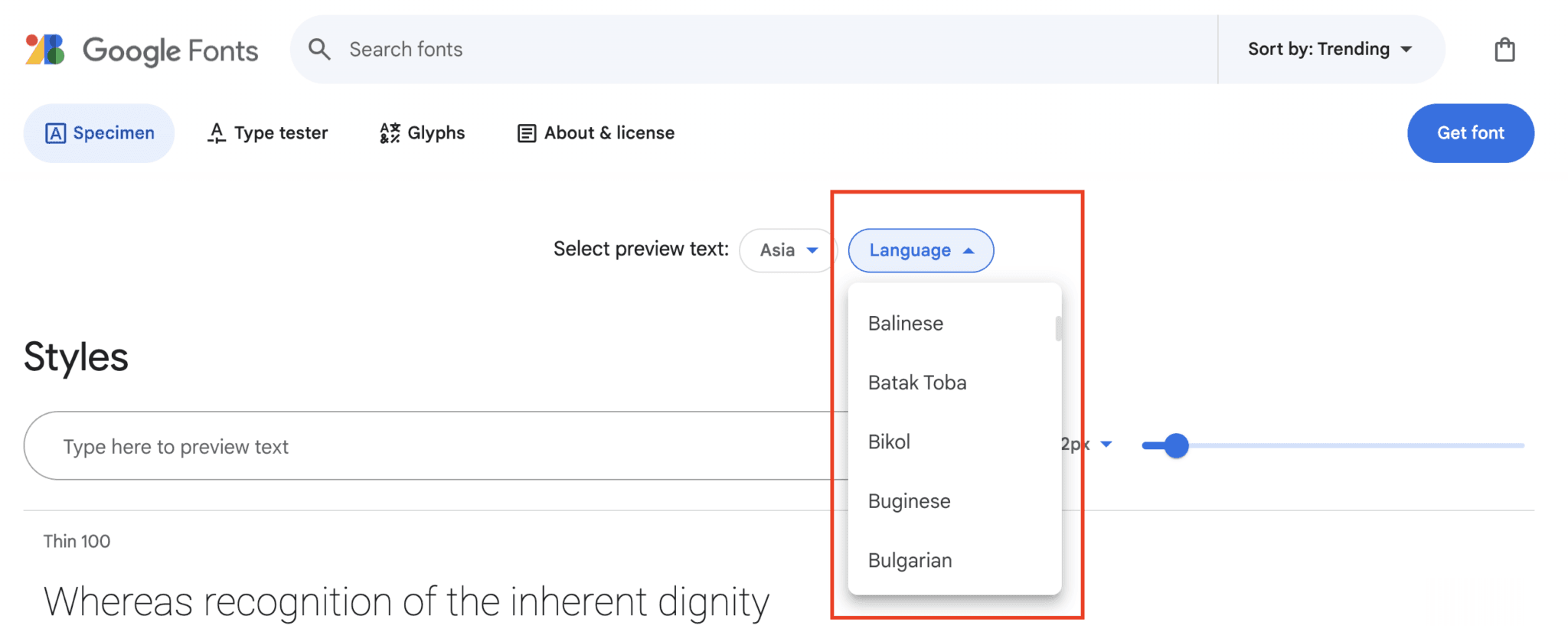
Ensure flexible layout
Expanding text when translating into other languages is quite common. Some languages are longer and require more space than the original language.
Here are some tips to make the interface design more flexible to accommodate text expansion.
- Use responsive containers. Ideally, avoid using fixed dimensions on text containers.
- Place labels above fields on forms. Placing labels above input fields will provide more space for long text strings than left-aligned labels.
- Design considering “Left to Right” and “Right to Left” writing directions. Text in various languages has different writing directions. Most use left-to-right direction, but some, like Arabic, are written from right to left. The layout design should also be mirrored if you need to support right-to-left. The entire page must be mirrored – text, images, buttons, and navigation.
Below are two examples of digital products, namely photos. When using English, the sentences indicated by the arrows are not long enough.
Meanwhile, when translated into Tamil, the sentences change to be longer, as do the buttons that automatically adjust.
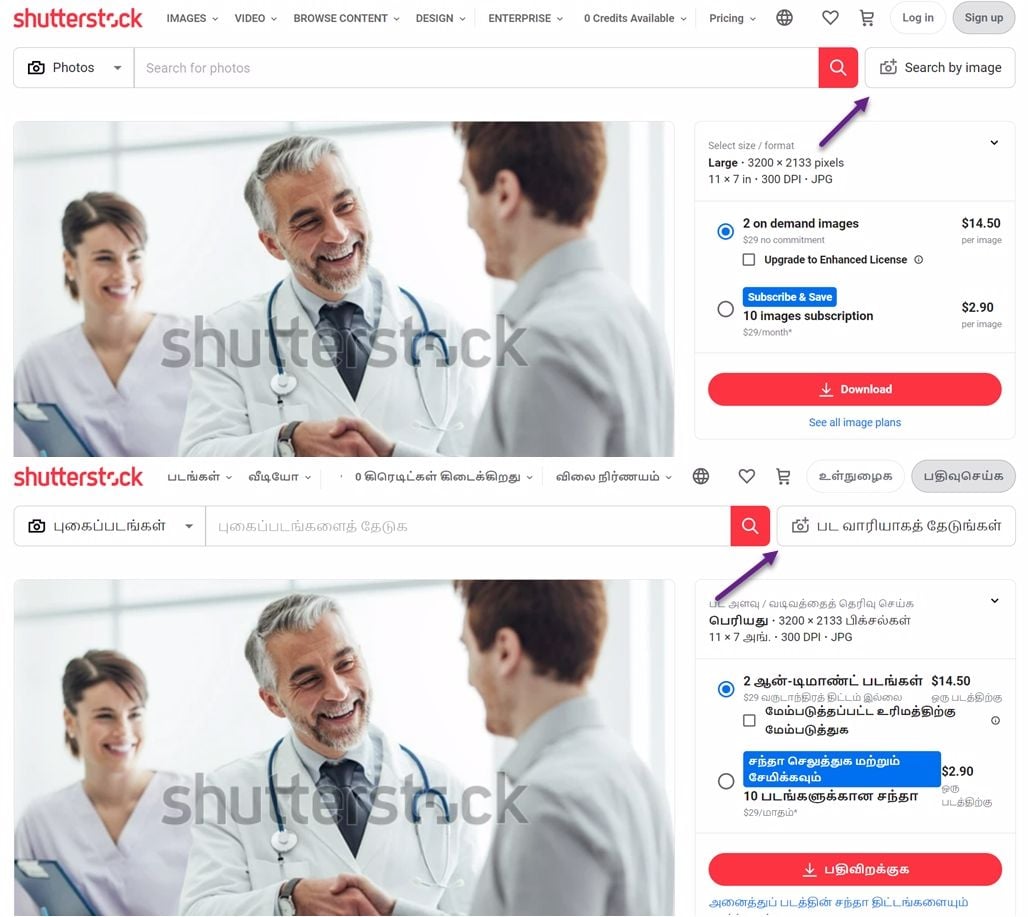
Localize the format used
One comprehensive localization strategy is to localize the format used. Various formats may be used in your digital products. The following are some formats that you should pay attention to.
- Date format – Date formats vary between countries, so knowing each country’s numerical calendar date format is important.
- Measurement units – Consider the measurement system used in each country. Users in the United States generally expect data in the imperial system (pounds, inches, feet), while European users expect the metric system (grams and meters).
- Phone number codes – Country codes and the number of digits in phone numbers vary depending on the country.
- Currency – Each visitor expects to see prices in their native currency. Viewing foreign currency forces users to convert to their currency. Therefore, localize each currency according to the target country.
The following is an example of a digital product that localizes currency, where the language used is Japanese so the currency also changes to Yen.
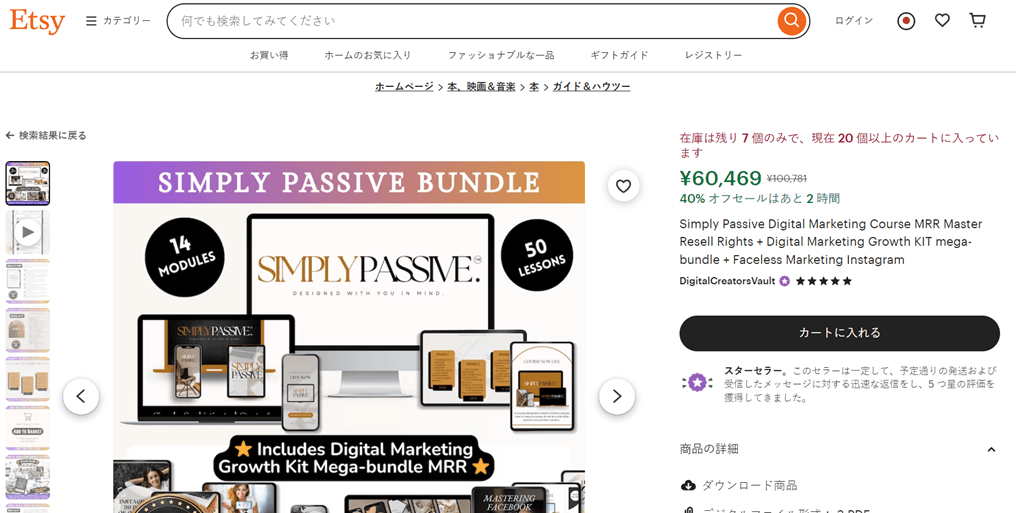
Adapt media to the culture
Adjust images, icons, colors, videos, or other visual elements to align with the local culture and norms. Some symbols or colors may have different meanings or sensitivities in different regions. The media used should reflect local values.
Furthermore, avoid using visual or audio elements that may offend or be inappropriate for the local culture. Consider using different media assets or making necessary adaptations to ensure that the media is well-received by the local audience in each target country.
Linguise: Translation service for creating a multilingual digital product
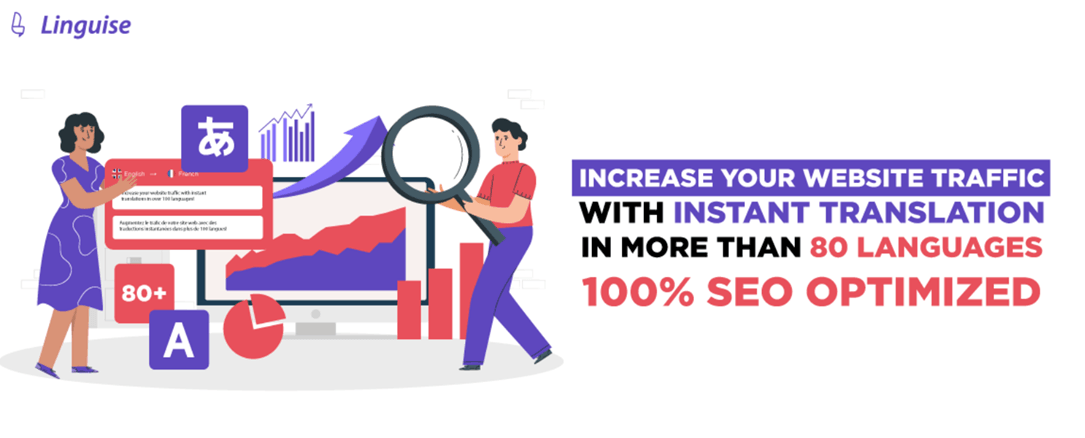
Now that you know the tips for creating multilingual digital products and why you need to localize, it is crucial to choose a translation service that can assist in translating quickly and accurately.
Linguise is a translation service offering a range of features to support multilingual product creation. Below are some of the features Linguise supports in creating multilingual digital products.
- Automatic content detection and translation.
- Tested and integrated with popular CMS for your store, including Shopify and also perfect plugin translate WordPress.
- Perfect quality translations with a neural machine and AI cloud translation.
- Support for creating and customizing language switchers.
- Front-end support live editor of translated content.
- Advanced translation exclusion rules.
- Ability to add translators to the dashboard to assist in more nuanced translations.
With Linguise, you can realize multilingual digital products to facilitate users who want to access your product in various languages.
Don’t hesitate to use Linguise to create multilingual digital products. Register a Linguise account and try the Linguise free trial for 30 days without entering credit card information.


